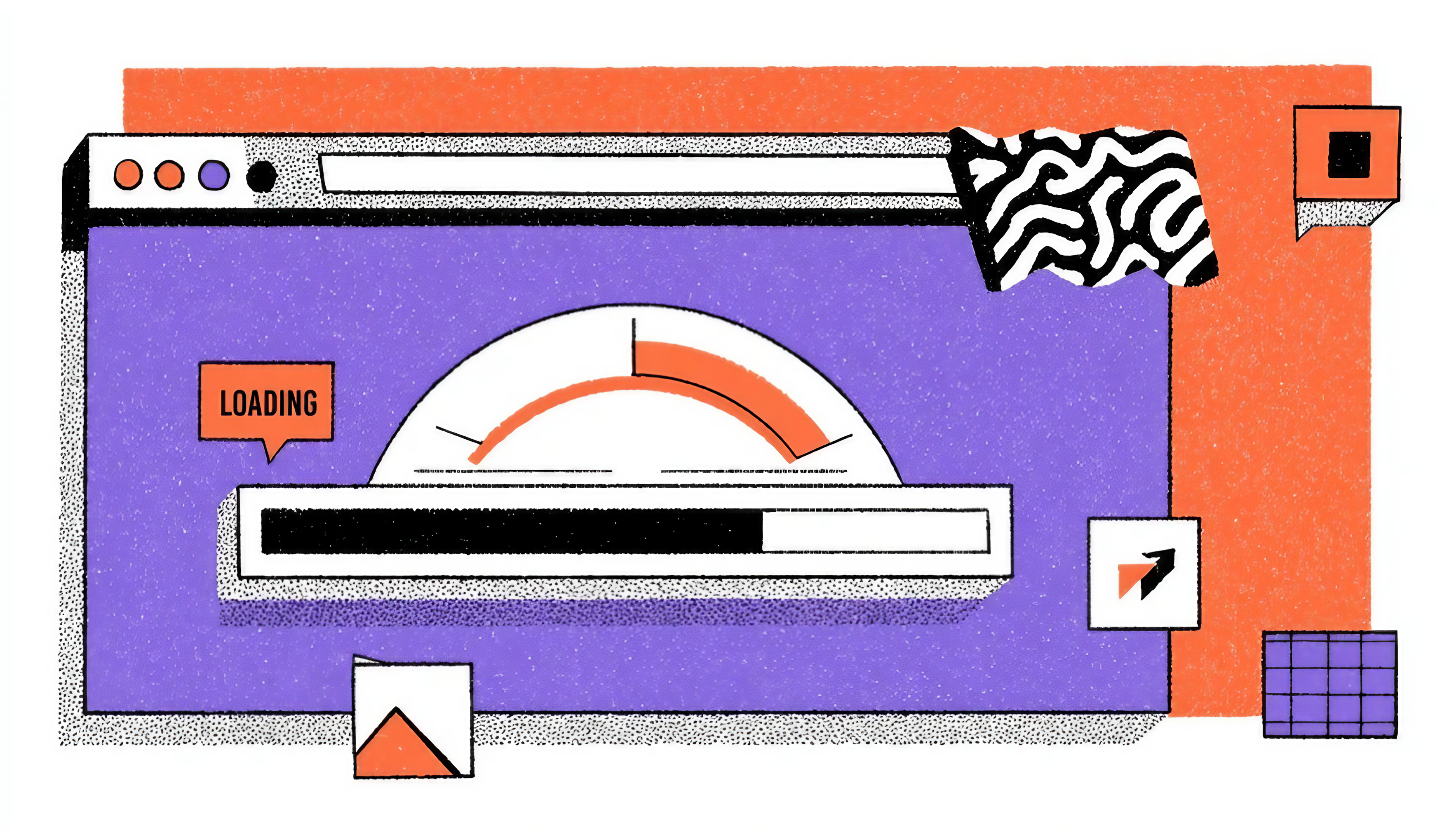Blink and You’ll Miss Them
Remember the last time you opened a news link on your phone and nothing happened? By the third heartbeat you’d already glanced at your coffee, sighed, and tapped away. That flinch reaction is now the norm. Google’s own data shows that as load time drifts from one to three seconds, the chance of a bounce leaps 32 percent. Push it to ten seconds on mobile, and abandonment rockets 123 percent.
Milliseconds are no rounding error; they’re make-or-break moments. In 2025, the average first-page Google result appears in just 1.65 seconds, making any delay a significant disadvantage. Picture two e-commerce sites that sell identical sneakers. One paints pixels in a second flat; the other dawdles at four. Users describe the slow shop with words like “sketchy” or “broken,” even when the content is flawless. Fast equals trustworthy the same way a firm handshake signals confidence.
Real-world proof? BBC engineers found they lost 10 percent of visitors for every extra second their pages took. When you’re serving millions of readers, that one-second lag is a stadium’s worth of disappearances—every single day.

How tiny delays warp brains—and balance sheets
Our nervous system rewards immediacy. A fast-loading page drips dopamine; a stalled spinner triggers cortisol and exit taps. Brands feel that neurochemical swing in hard currency. Amazon estimates that just 100 ms of latency siphons 1 percent of sales. Walmart echoed the lesson on a massive scale: each 100 ms they shaved off pages lifted revenue by about 1 percent; every full second raised conversions by 2 percent.
Take Pinterest’s 2015 mobile overhaul. Engineers gutted heavy scripts, trimmed images, and swapped server-rendered HTML for lean static shells. The result? Landing page speed improved 60 percent, and mobile sign-ups jumped 40 percent. That’s not a marginal tweak; it’s a marketing campaign’s worth of new users unlocked by pure engineering.
Think of latency like compound interest—only in reverse. Every extra second taxes attention, mood, and willingness to spend. If speed fuels trust, delay drains it faster than a battery-hungry app.
Core Web Vitals and the ranking rat-race
Google has always flirted with performance, but on March 12, 2024, the algorithm married it. Interaction to Next Paint (INP) officially replaced First Input Delay as the responsiveness Vital, measuring how quickly a page reacts to real taps and clicks. Pages that exceed INP’s 200 ms comfort zone slide down the SERP, surrendering rich-snippet trophies to leaner rivals.
Speed intersects SEO on multiple fronts: crawl budget, Core Web Vitals scoring, and user-engagement signals that feed RankBrain. Faster sites keep visitors around to read, share, and link — a behavior Google interprets as “this result satisfies intent.” Conversely, slow pages decrease dwell time and increase pogo-sticking, a clear indication of a poor user experience.
Consider two recipe blogs with equal domain authority. The first loads in 0.9 seconds, the second in 3.4. The quicker site ranks higher and captures lucrative voice-search placements. Smart speakers need instant answers, and Google won’t risk recommending a page that might keep grandma waiting while the sauce burns.

A pragmatic playbook packed with quick-win examples
- Audit like a surgeon. Run Lighthouse or PageSpeed Insights; aim for Largest Contentful Paint under 2.5 s and INP under 200 ms.
- Compress visuals. Conversion-rate specialists at Portent found sites that load in one second convert 2.5× better than those at five seconds—and images are usually the heaviest culprit. Shopify’s lossless WebP switch shaved 800 KB off their hero carousel, adding a full second of breathing room.
- Lazy-load below the fold. Fashion retailer ASOS deferred off-screen assets and chopped the first load by 30 percent without touching design.
- Streamline scripts. Defer analytics tags, split bundles, and tree-shake unused codes. A single third-party chat widget can tack on 300 ms; move it or lose it.
- Ship through a CDN. Distance is the adversary of latency. By placing assets on edge nodes, Canva reduced the time it took for the first byte to reach users in Brazil from 750 ms to 110 ms.
- Cache aggressively. BBC World News cut repeat-view LCP by half just by extending local cache headers from one hour to a week.
Treat every kilobyte like carry-on. If it fails to bring joy or generate revenue, it should be discarded.
From one-off sprint to perpetual motion
Great performance isn’t a rescue mission; it’s a lifestyle. Incorporate performance budgets into continuous integration pipelines to ensure that new code fails the build if it increases LCP or INP. Celebrate “-50 ms” Slack messages the way you cheer new design wins. Equip designers with lightweight pattern libraries so mock-ups start lean instead of being slimmed later.
Adopting HTTP/3 for faster handshakes, streaming dynamic content from edge-compute runtimes, and testing speculative pre-rendering for high-intent internal links are key steps in future-proofing. Remember, what feels snappy on Wi-Fi in New York can drag on 4G in Nairobi. Keep a global device farm — or at least a throttled network profile — on your QA checklist.
Speed becomes an invisible moat. Two coffee kiosks sit side by side. One hands you a latte in 30 seconds; the other makes you wait five minutes. Prices match, flavors match, yet loyalty gravitates to the swift barista. Online, your code is the barista. Make it hustle.
Bottom line: Page speed is the first handshake, the silent elevator pitch, and the cheapest conversion lever you’ll ever pull. Respect the clock, and the clicks—and cash—will follow.







